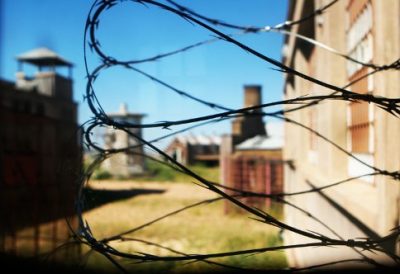Detention

ICE Detention Cover-Up Has Advocates Calling for Transparency
Despite claims of increased transparency, accountability, and oversight, Nina Bernstein of the New York Times has unearthed more cover-ups at Immigration and Customs Enforcement (ICE). These new findings have attorneys, advocates, and the public wondering if and when ICE will make good on its promise to reform the immigration detention system in demonstrable ways. Two issues that have recently come to light cast doubt on these promises. Read More

Napolitano Looks for Comprehensive Way Forward
Department of Homeland Security (DHS) Secretary Janet Napolitano testified in an oversight hearing today before the Senate Judiciary Committee. While reinforcing her commitment to securing our borders and enforcing our immigration laws in smart and effective ways, Napolitano also reaffirmed her commitment to immigration reform as a way to strengthen our immigration enforcement policies—a commitment that includes, as Secretary Napolitano notes, responsibility and accountability from everyone involved: Read More

Transforming the Role of Immigration Enforcement through Immigration Reform
For years, the U.S. government has tried and failed to curb undocumented immigration through enforcement-only tactics at the border and interior raids. The number of Border Patrol Agents has increased substantially over the past years—as have budgets and technological investment at the border—yet none of these increases have resulted in a significant decline in the undocumented population. In fact, we have the largest undocumented population in our nation’s history. Simply enforcing the woefully outdated and ineffectual immigration laws currently on the books is not working. Many immigration enforcement experts—including DHS Secretary Janet Napolitano—agree that the only way to solve our immigration enforcement problems is through comprehensive immigration reform. Read More

ICE Transferring Detainees Impedes Their Access to Counsel and Limits Their Right to Present a Defense to Deportation
Two recent reports draw attention to yet another defect in the government’s problem-ridden detention system: ICE’s practice of regularly transferring immigration detainees from one jail to another, often far from where ICE initially arrested them. Transfers have a devastating effect on a person’s ability to retain counsel and maintain an attorney-client relationship; present a defense to deportation; and obtain release from detention. The government should take immediate steps to eliminate these effects and ensure that people who are detained are afforded a fair hearing. Read More

DHS Interprets Law to Detain Refugees Across the Country
Last month, President Obama authorized the admission of 80,000 refugees into the U.S. in fiscal year 2010, something every President has done annually since passage of the Refugee Act of 1980. The United States has long recognized the importance of providing a safe haven for refugees. Beginning with laws granting refugee status to displaced persons after World War II and culminating with the comprehensive Refugee Act of 1980, the U.S. has sought to safeguard those who are unwilling or unable to return to their homeland based on a “well-founded fear of persecution on account of race, religion, nationality, membership in a particular social group, or political opinion.” Read More

The Right to a Remedy for Ineffective Assistance of Counsel
Immigrants reasonably rely on their lawyers’ advice, and they expect their lawyers to be knowledgeable about immigration law and procedure. They count on their lawyers to be their voice in immigration court when facing removal and help ensure that they have a meaningful opportunity to be heard. In the great majority of cases, lawyers competently represent their clients’ interests. But what happens in those occasional situations where the immigrant is defrauded by an unscrupulous lawyer, or an otherwise competent lawyer makes an inadvertent mistake that results in the person being ordered removed from the United States? Certainly, a person should not be deprived of the opportunity to present a defense in removal proceedings because of his or her lawyer’s conduct. Read More

New Report Shines Light on Detainee Rights Violations in Minnesota
Over the summer, three graduate students at the University of Minnesota’s Humphrey Institute interviewed immigration attorneys and public defenders to document their experiences working with detained immigrants. The result—a heartbreaking account of detainees locked away, without access to counsel or family, in a system where rights and the most minimal detention standards are routinely violated. Read More

DHS’s Plan to Reform U.S. Immigration Detention System a Good Start
When I was a little girl, my mom posted a sign in our kitchen which read, “If you want to change the world, start with your own little corner.” It’s possible that Dr. Dora Schriro, author of the Immigration Detention Overview and Recommendations report released today by DHS, grew up with a similar motto. Her concise report systematically documents and critiques the legendary shortcomings and tragic consequences of America’s immigration detention system. Read More

Does ICE’s Criminal Alien Program (CAP) Target Serious Criminals?
Over the past several years, ICE has increased the number of partnerships with state and local police. There has also been a new emphasis on identifying “criminal aliens” who are detained in jails and prisons, and deporting them once they finish their sentences. However, many concerns have been raised about how these programs are being implemented. In fact, various reports have shown that while ICE claims they are targeting serious criminals, the majority of persons ICE identifies and deports do not actually have any serious criminal records. Read More

New Report Holds Immigration Detention System Up to the Light
Transparency and oversight have never topped Immigration and Customs Enforcement’s (ICE) priority list—especially during the post-9/11 Bush administration when ICE’s detention system nearly tripled in size. Last month, however, ICE director John Morton announced a new plan to overhaul the flawed immigration detention system and broaden federal oversight. Sure, the new plan was announced shortly after ICE was forced by the ACLU under the Freedom of Information Act (FOIA) to release a “comprehensive list of all deaths in detention” (which now totals 104 since 2003), but still, John Morton’s intention to make ICE more transparent and efficient seems sincere. The question, however, is whether or not ICE will actually be able to restructure its sprawling detention system after years of scant oversight and zero accountability. Read More
Make a contribution
Make a direct impact on the lives of immigrants.
